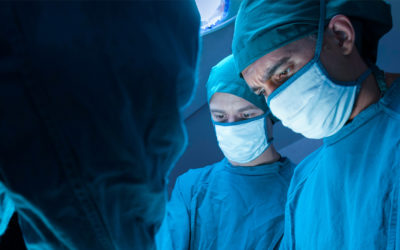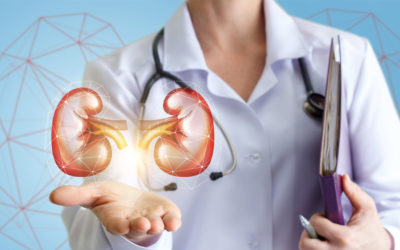Cholecystectomy
The gallbladder acts as a storage unit for a bile- a liquid that aids our bodies in digesting food as it enters the intestine. In most cases, gallbladder dysfunctions require surgical treatment and/or removal.
The surgical removal of the gallbladder is typically performed by inserting a laparoscope and surgical instruments through small incisions. However, some Vista surgeons are specially trained in robotic surgery to perform cholecystectomies that prove to be especially challenging.
The Single Site option
Thanks to the new Single-Site™ capability in robotic surgery, specially trained surgeons at Vista Medical Center East can remove a diseased gallbladder through a tiny incision in the belly button that leaves the patient virtually scarless. And it only takes about an hour.
According to the American College of Surgeons, surgery is the recommended treatment for gallbladder pain from gallstones and non-functioning gallbladders. Using the single-site option is less invasive for the patient, plus Vista’s specially trained surgeons have more flexibility when they expect to encounter more complicated cases.
As the next step in the evolution of surgical technologies, Vista East is one of a select number of hospitals in metropolitan Chicago to offer this technically advanced surgery. This demonstrates Vista’s leadership in providing patients with the most up-to-date, minimally invasive surgical options.
For More Information
Call 847-360-3000
Related Services and Conditions
Vista Weight Loss
Robotic Surgery
Medical technology has come a long way—so far that we may now use robotic “hands” to assist surgeons during complex and delicate procedures. Robotic surgery includes three arms that allow the surgeon to hold and manipulate high-precision instruments, plus one more arm...
Colectomy
The colon and rectum aid in digestion by removing salt, water and other nutrients from digested food and produce and store stool. Digestive conditions including colon cancer, diverticular disease, inflammatory bowel disease (ulcerative colitis, Crohn's disease) and...
Gastrectomy
The stomach aids in digestion by taking food from the esophagus and storing it while specialized cells secrete chemicals to breakdown food. The stomach's muscles then propel the food further into the digestive tract. Conditions such as cancer, pre-cancerous lesions,...
Gastric Bypass
Gastric bypass is the most commonly performed surgical weight loss procedure. Gastric bypass can also be performed for other conditions, including diabetes. This procedure is traditionally performed with a single, large incision over the abdomen, allowing surgeons to...
Gynecology Robotic Surgery
Women have special needs when it comes to gynecological surgery. The reproductive system includes many delicate organs that can affect hormones, fertility and other body systems. Many gynecological issues, like problems with your period, can be addressed with...
Hiatal/Paraesophageal Hernia Repair
A paraesophageal hernia is a specific type of hiatal hernia- a hole between the abdominal cavity and chest cavity that allows a portion of the stomach or other portions of the intestine to move into the chest and become trapped. Paraesophageal and hiatal hernias can...
Partial Nephrectomy
A partial nephrectomy procedure requires the removal of a section of the kidney by targeting cancerous cells while preserving the rest of the organ. Robotic surgery can be used to save kidney function and cause less scarring, reduce blood loss and shorten recovery...








